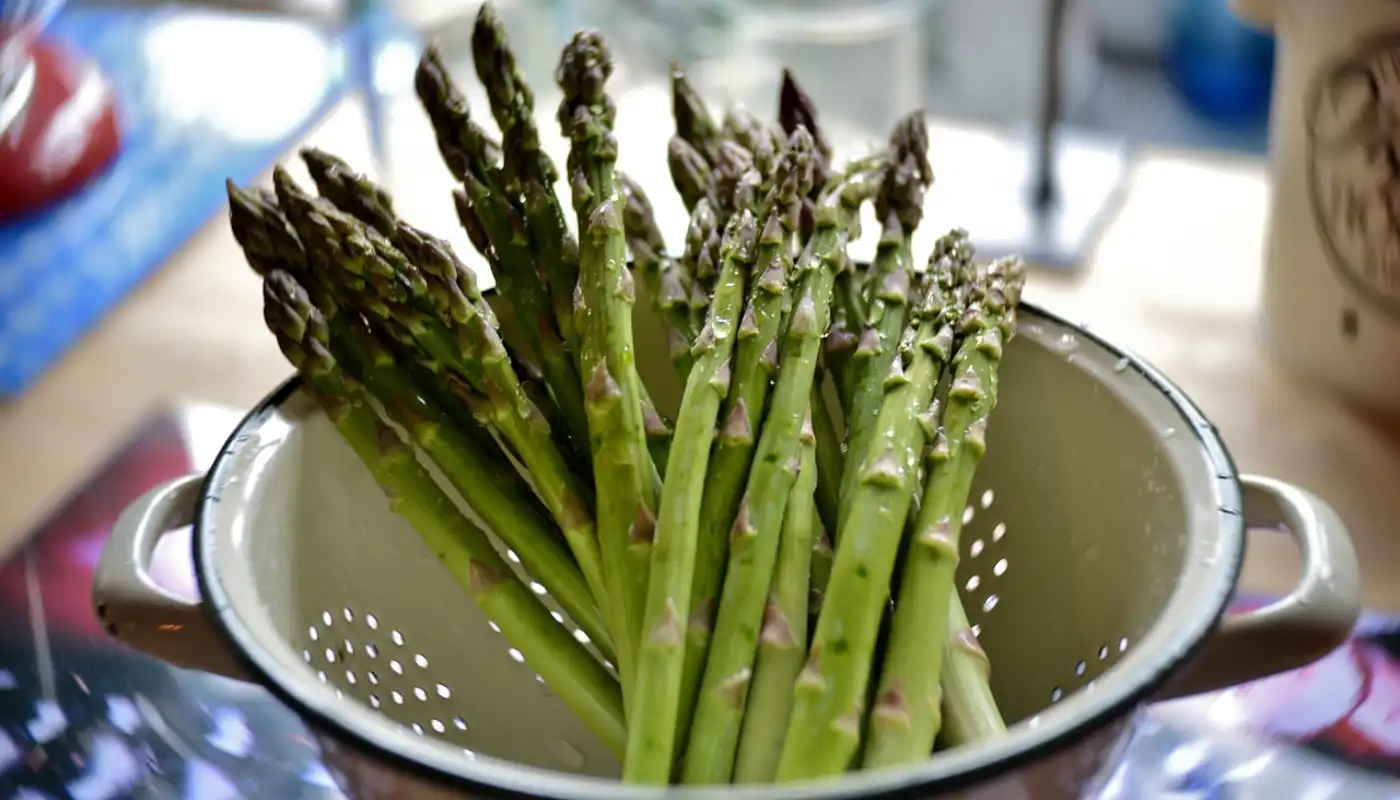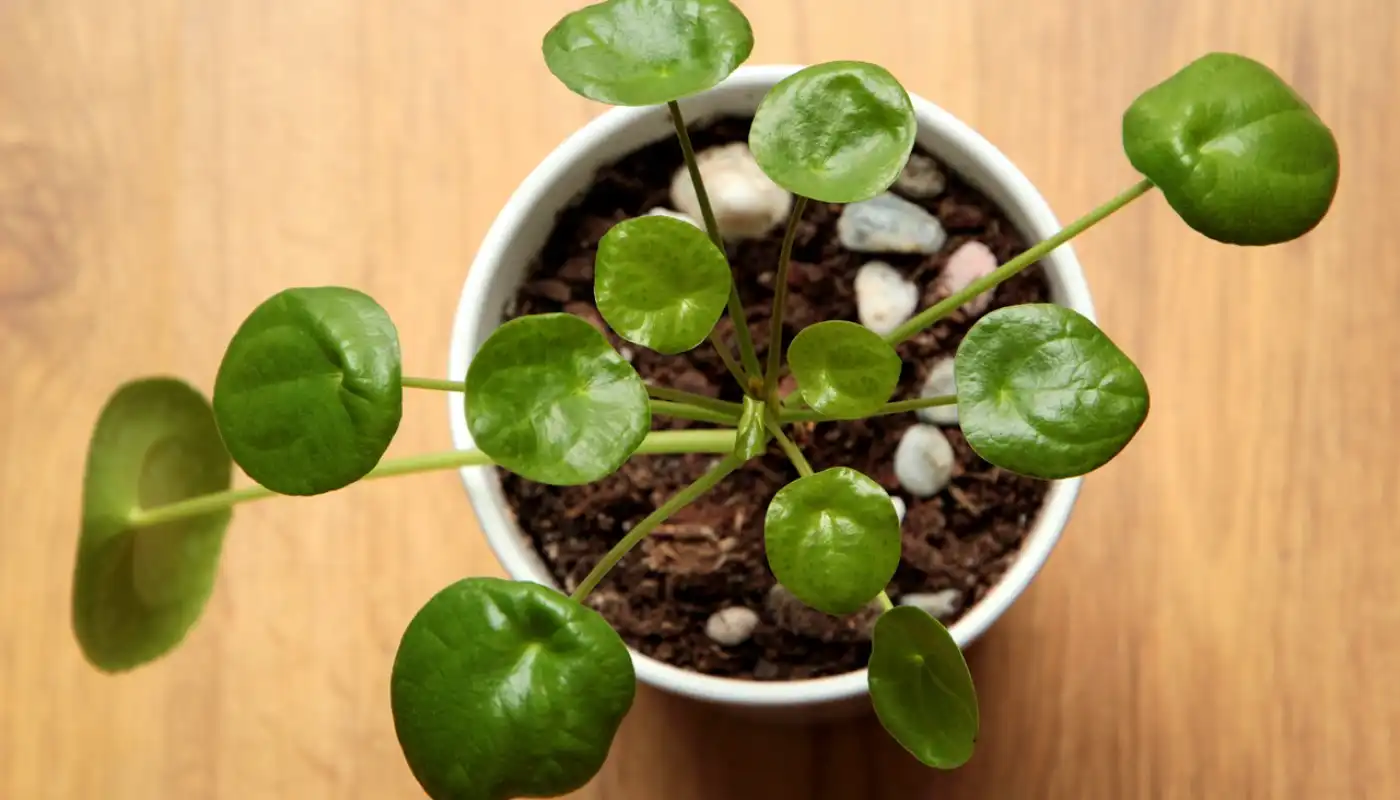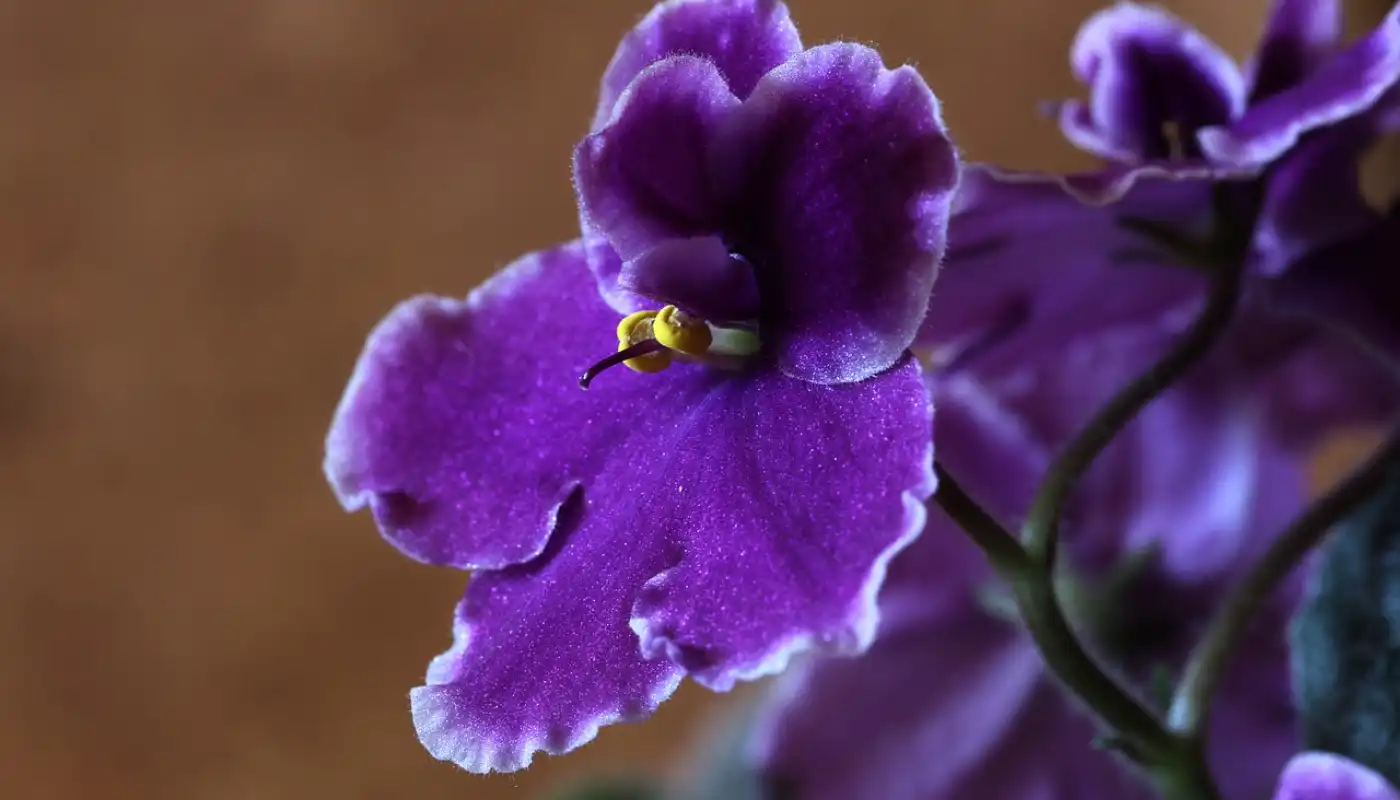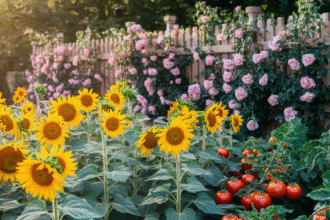Have you heard of Terrarium plants? They are one of the latest gardening trends at the moment. These glorious mini gardens are not only stylish and attractive but also take up less space and require minimal care.
If you are new to terrariums? Here is our list of the 16 best terrarium plants for beginners to consider. These plants are suitable for either open or closed terrariums.
But what is a terrarium?
What Is A Terrarium?
A terrarium is simply a large clear glass container in which plants can grow. It can either be open or closed.
An open one has an open top or side wall and receives fresh air to regulate temperature, reduce humidity, and reduce the risk of mold.
A closed one is fully enclosed without any opening for airflow, creating a mini ecosystem that doesn’t require water for the plants. The air within the glass container is recycled, and a forced warm, humid environment is created.
A terrarium offers an environment similar to a greenhouse, where the humidity and temperature can be more controlled and closely monitored.
In a nutshell, a closed terrarium is great for low-maintenance, humidity-loving plants.
What Are Terrarium Plants?
These are houseplants most suitable for growing in a clear glass container – terrarium. They are planted in a well-arranged format, like a miniature garden.
Foremost, terrarium plants must be well-adapted to grow in a terrarium and be of the same growing requirements, such as light, soil, watering, and humidity.
More so, they must be small, compact, and slow-growing so that they don’t outgrow their space. These plants should also require low maintenance and less attention.
However, determining which plants to choose depends on whether that terrarium is closed or open.
Closed terrarium plants should be humidity-loving plants and plants that thrive in moist conditions. Open terrarium plants should be plants that love above-average humidity.
In a nutshell, here are plant types that thrive in the terrarium:
Low-light Plants
Plants that require low light and can survive even in dim environments, such as ferns and mosses.
Humidity-loving Plants
Especially if you are planning plants for closed terrariums, consider plants that love warm and humid environments, like orchids, lilies, snake plants, and baby spider plants.
Small Plants
Plant size matters a lot when planning your terrarium, and this depends on the terrarium design, size, and dimension.
Make sure that you grow plants that are small enough to fit into your terrarium without touching the glass.
Dwarf conifers, succulents, and cacti are small and slow-growing, so they are ideal to plant in your terrarium.
Note: Light exposure is very important when choosing a location for your terrarium. While some terrarium plants are low-light and adapt best to shaded areas, some thrive in brighter light.
If you are growing plants that love bright light like African violet, we recommend that you set up a solar lighting system in the area where you set up your plant, and don’t forget to clean up the solar panels frequently to keep the light shining brighter.
Best Terrarium Plants

While terrariums can be filled with any suitable plants, here are the best plant ideas for terrarium:
Nerve Plant (Fittonia)

Fittonia, popularly called nerve plant, tops our list as an excellent choice for closed terrariums.
Fittonia bears colorful and patterned foliage in different color shades, which makes the plant suitable for wider color-coordinated displays.
Fittonia is easy to care for, slow growing, and compact, so it won’t outgrow its space. It also requires low light and thrives in a humid environment.
If you are new to terrarium plants, you can’t go wrong with nerve plants.
Asparagus Fern (Asparagus setaceus)

Here is another great plant for your terrarium, thanks to all its amazing qualities.
Asparagus fern has an elegant, tree-like structure that makes it look like a softer parlor palm. It gives an elegant look in some terrariums, either alone or in combination with some other plants.
Asparagus fern thrives in a humid environment and requires low maintenance, which makes it ideal in a closed terrarium.
Please note that this plant has tiny thorns and is mildly toxic. The leaves can also turn brown if it is handled too much.
However, all these shouldn’t be an issue since you are growing it in a terrarium.
Sphagnum Moss (Sphagnum capillifolium)

Sphagnum moss is usually grown in terrariums for decorative and practical purposes. This plant helps store water for other plants in the terrarium.
Sphagnum moss comes in a brownish sage green color, thrives in indirect light or shade, loves moist soil, and does well in an open terrarium.
Make sure that you lightly water Sphagnum moss frequently, but do not overwater to avoid mold growth – watering once a week is ideal.
Frosty Fern Spike Moss (Selaginella kraussiana ‘Variegatus’)

Frosty fern spike moss is an ideal option when you need something a bit flashier than the regular moss. It thrives in consistent moisture, humid areas, and partially low light environments.
Frosty fern spike moss has a frond-like foliage with bright white tips at the edges. A closed glass container would supply the necessary humidity this plant needs to survive.
Keep this plant away from direct sunshine, which can scorch its leaves.
Peperomia

The Peperomia plants have small sizes, succulent-like leaves, shallow roots, and spreading growth habits, which make them look like they are specially made for terrariums.
There are many species of Peperomia to choose from – Peperomia argyreia (watermelon peperomia), Peperomia polybotrya (raindrop peperomia), Peperomia obtusfolia (Mini Rubber Plant), Peperomia prostrata (string of turtles), and Peperomia ‘Pepperspot’.
Peperomia prostrata and Peperomia ‘Pepperspot’ are trailing peperomias, Peperomia obtusfolia and Peperomia polybotrya are large-leaved peperomias, while Peperomia argyreia is a foliage peperomia.
All of them thrive in indirect light and humid conditions, which makes them perfect for beginner terrarium growers.
Their succulent leaves make them susceptible to overwatering. Hence, Peperomia plants are well-adapted to open plant terrariums.
Polka Dot Plant (Hypoestes phyllostachya)

Another plant for terrariums on our list is the Polka Dot Plant. Polka dot plant comes in several different varieties with leaves in different shades like green, white, red, purple, pink, etc.
They love warm and humid environments. They are also slow-growing and compact, which makes them ideal for closed terrariums.
Unlike other plants listed above, this plant thrives in bright but indirect light. If you place the plant in a dark area, you ruin the display of your terrariums as the plant may tend to grow towards light.
Pilea (Pilea Peperomioides)

Pilea thrives in a closed terrarium because it loves a warm, humid environment and doesn’t need direct sunlight.
The plant comes in several species, which include the artillery fern (Pilea microphylla), baby tears (Pilea depressa), Moon Valley pilea (Pilea mollis), and friendship plant (Pilea peperomioides).
The Moon Valley pilea comes with textured green leaves with burgundy veins, which makes a beautiful statement.
Pilea peperomioides is a larger type of pilea and requires a larger terrarium.
Creeping fig (Ficus pumila)

Ficus pumila has fresh heart-shaped green leaves, which quickly cover the soil before it begins to creep up the sides of your terrarium.
Creeping fig does well in an environment with high humidity. The plant requires more light than some other terrarium plants, or else it will become leggy. However, it doesn’t need direct sunlight.
Arrowhead vine (Syngonium)

There are several different arrowhead vine species you can choose from. Each species has different leaf shapes and colors.
Arrowhead vine thrives in very low light and moist conditions, and it is very easy to care for.
Mind you, this plant will only grace your terrarium when it’s young. As a vine, it will eventually outgrow the space. However, you can easily cut them back into shape.
To save yourself the stress, grow Syngonium ‘Pixie’ instead. This species has cream-white and green leaves, it is more compact, and it is also terrarium-friendly.
Strawberry Begonia (Saxifraga stolonifera)

Strawberry begonia, popularly called the mother of thousands, is also a creeping plant but has round-shaped olive green leaves with silver spots along the veins.
This plant has small, pink-white flowers with a delicate fragrance.
A plant of Strawberry begonia can quickly grow slender shoots, which can develop other ‘baby’ plants.
This plant is compact, which makes it good for terrariums. However, it can quickly cover up the entire soil, providing a foil for other plants.
Prayer plant (Maranta leuconeura)

Maranta leuconeura folds up its leaves at night as if it’s prayering. Hence, the name “Prayer plant.”
This plant has many varieties, which come with red veining on the leaves and beautiful midrib splotches.
Prayer plant thrives in humid environments, which makes it ideal for terrariums.
It requires enough sunlight and will not open its leaves during the day if it doesn’t receive enough light. It’s ideal to keep your Prayer plant near a window where it can receive bright but indirect light.
Maranta leuconeura can grow up to a maximum height of 30cm. So, consider a big terrarium if you are planning on growing prayer plants.
Pothos (Epipremnum aureum)

Pothos thrives in a humid, low-light environment, and requires less watering. It grows so fast, so you would need a larger terrarium, otherwise, you would need to prune it back into shape regularly.
This plant comes with green leaves with cream variegation, which acts as a perfect foil for other plants within the container.
African violet (Streptocarpus)

African violet is also a good choice for a closed terrarium because of its love for high humidity and indirect but bright light.
Make sure to grow African violet in a large glass container because its leaves must not touch the glass else the leaves will trap moisture and develop mold.
You can also grow other plants, such as the Earth star plant (Cryptanthus bivittatus) around African violet in the terrarium to reduce the chances of the leaves touching the glass.
Cactus

Cactus is not only one of the right plants to grow in a terrarium but also one plant that is easy to maintain. Cactus is a slow-growing plant and requires almost no care at all.
This plant can’t survive in a humid environment, which makes it perfect for open terrariums.
Make sure that the terrarium has a large opening to allow more airflow. More so, create a desert-like landscape in the terrarium using sand and a variety of cactus types.
Echeveria

Echeveria is a succulent plant and is available in several shapes and colours. The fleshy succulent leaves makes Echeveria a drought-tolerant plant.
This slow-growing plant makes a good option for an open terrarium and can be grown with other succulents and cacti.
When growing in the right conditions, Echeverias can develop long stems with pretty flowers, which can add to the aesthetics of your terrarium.
Earth star plant (Cryptanthus bivittatus)

Earth star plant bears a flat rosette of lush foliage, which comes in several different colours like purple, red, green, and so on.
Rather than grow upwards to outgrow the glass container, this plant grows outward to cover the soil gradually.
Earth star plants do well in warm, humid environments with indirect sunlight, making them perfect for a terrarium display.
Conclusion – Best Terrarium Plants
Careful selection of plants for your terrarium plays an important role in creating a beautiful and thriving terrarium that blends nature’s beauty with thoughtful design.
From delicate ferns to drought-tolerant succulents, this post offers you diverse options of the best plants to create a thriving miniature ecosystem and enjoy the beauty of nature indoors.
Here is a helpful tip on how to protect your plants in winter from frost and freeze.
Frequently Asked Questions (FAQs)
The best plants depend on the type of terrarium you are setting up. For instance, if you are setting up a closed terrarium, consider plants that thrive in humid environments, such as mosses. However, if you are setting up an open one, cacti and succulents are the best choice.
How often you should water your plants depends on the terrarium you set up – open or closed, and the type of plants you are growing. For instance, an open terrarium needs more watering more frequently, especially during dry periods, while a closed one requires less watering because it creates its own mini ecosystem. Watering a closed terrarium more frequently may lead to overwatering and root rot.
This depends on the type of plants you are growing or want to grow. Plants like mosses, ferns, and some succulents are low-light plants and prefer indirect light, while cacti and some succulents are high-light plants and need bright, direct light. Always check with a professional to know your plant’s requirements.






